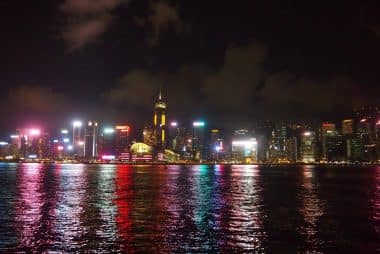CLEO 2018 Pacific Rim Shun Fujii
Research
CLEO Pacific Rim 2018 Return Report
Shun Fujii, 1st year doctoral student
Dates: July 29~August 3, 2018
Venue: Hong Kong Convention and Exhibition Centre, Hong Kong
About the Conference
2. introduction of your presentation and the presentations you have attended
My presentation was on the generation of optical carcoms under the influence of higher-order dispersion, and the content was the same as that presented at ALPS in April. This was the fifth time for me to give an oral presentation at an international conference, and I no longer feel extremely nervous, but it is always difficult to organize a presentation while watching the audience's reaction. In this respect, the presentations by the invited speakers are very informative because they have the ability to draw the audience in.
Overall, there were few microcomputer presentations, and only two sessions that looked like microcomputers: "Nonlinear Optics in Microresonators" and "Solitons and Temporal Wave Guiding, and Frequency Comb". This indicates the recent trend of microcomputers being swallowed up by other sessions that are not dedicated to microcomputers, due to the shift toward application-oriented research.
Among them, we introduce a presentation (W2F.2) in which we proposed a method of using two lasers, a pump laser and an auxiliary laser, to generate solitons. Usually, various techniques such as "wavelength scan," "power kicking," and "backward tuning The reason for this is that the soliton generation is not stable. The reason for this is that stable generation of solitons requires control of the heat in the resonator at the equilibrium point, and many methods have been developed to overcome this thermal problem. In this study, we proposed a new method in which an auxiliary laser is placed in a resonance mode in advance, and another pump laser is used to sweep a different resonance mode, thereby changing the balance of heat in the resonator and stably obtaining a soliton. This method itself has already been presented at CLEO:2018 (JTu2A.148), and in this CLEO PR, high-resolution spectroscopy using solitons generated by the method was demonstrated.

- Categories
- 国際会議報告


